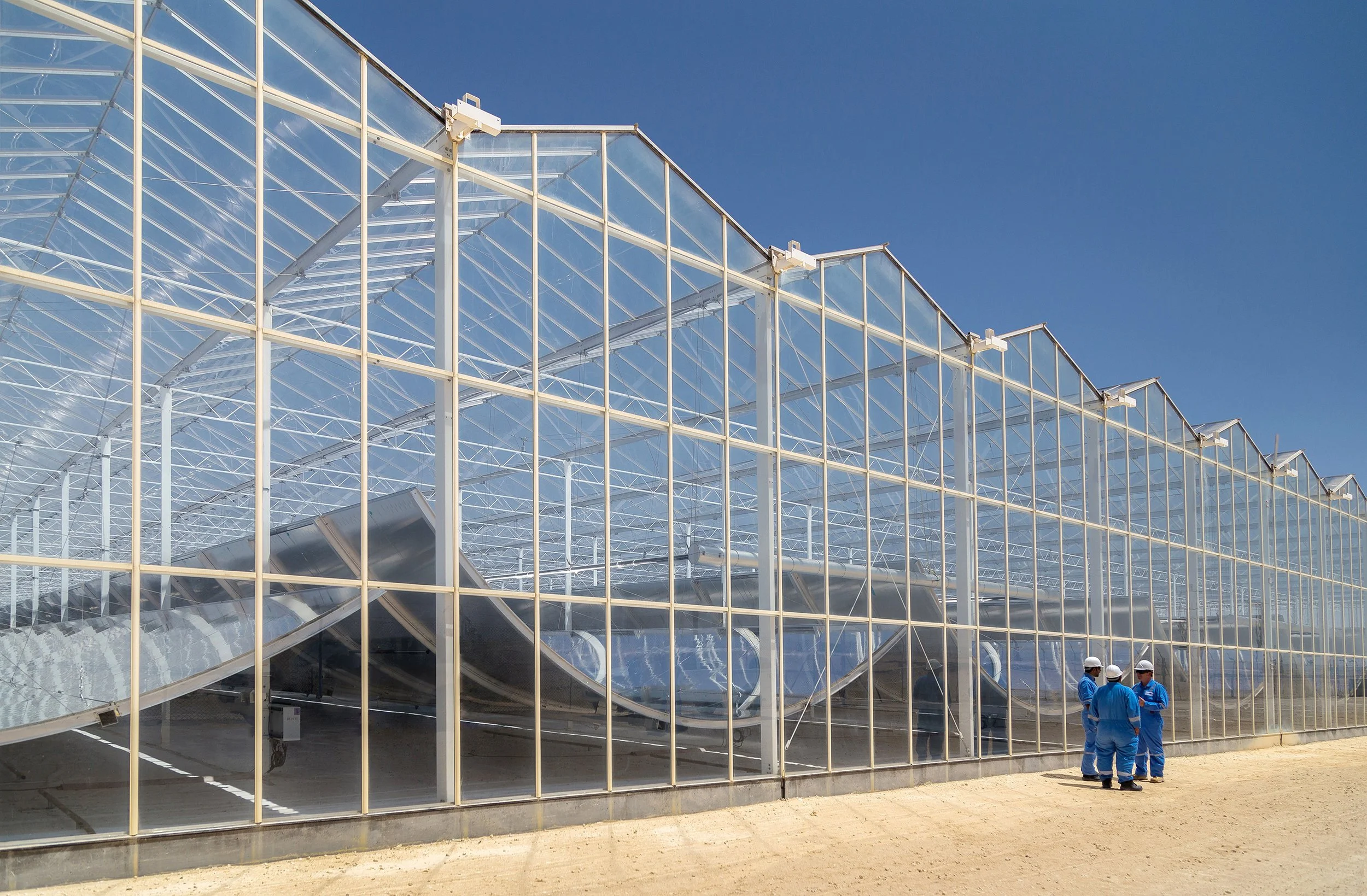
Proven Technology
GlassPoint’s enclosed trough technology combines the lowest capital cost to construct, with the lowest cost to operate, with an industry-leading energy density that is six times greater than that of solar panels.
Lowest Capital Cost
Enclosed trough systems are much lower-cost to build than systems with exposed mirrors, allowing GlassPoint to deliver zero carbon steam at the lowest possible cost.
Solar thermal systems use large mirrors to focus sunlight onto pipes containing water. Commonly, these are placed outside which exposes them to the elements and makes them vulnerable to strong wind loads and increasingly common extreme weather events.
To circumvent damaging exposure, GlassPoint’s enclosed trough design places the mirrors indoors so that they are protected from the wind.
The enclosed trough design places the mirrors indoors so that they are protected from the wind. This allows them to be of low cost and lightweight construction. The side walls of the enclosure still need to be strong enough to withstand the wind, but that requires far less material, than reinforcing every mirror individually, as each wall protects many individual troughs.
Overall, enclosed trough systems have less than half the amount of metal, glass and concrete than in an outdoor system of equivalent size.
GlassPoint has been developing and improved enclosed trough technology over the last ten years, resulting in a portfolio of over 100 issued and pending patents.
With exposed systems, every mirror needs to be reinforced against the wind. With enclosed trough, only the outside wall needs to be reinforced against the wind.
How enclosed troughs work
Step one
There are no solar panels in a GlassPoint system. Instead, large curved mirrors are suspended inside an agricultural glasshouse.
Step two
The mirrors automatically track the sun throughout the day, focusing sunlight on a stationary boiler tube containing water.
Step three
The concentrated sunlight heats the water to efficiently produce high-pressure steam.
Lowest Operating Expense
When the mirrors in solar thermal systems become soiled they reflect less sunlight, and hence produce less energy. Therefore, keeping the mirrors clean plays a crucial role in maintaining system performance. This is particularly challenging as industrial scale solar steam systems may contain several square kilometers of mirrors. As a result, in most solar thermal projects, the dominant operating expense is labor related to mirror cleaning.
GlassPoint’s enclosed trough systems place the mirrors inside a “clean room” enclosure, protecting them from dust and dirt. The roof of the glasshouse enclosure is automatically cleaned every night by a robotic cleaning system. These systems have been in production for several decades and are a proven and robust technology. Automated cleaning boosts system performance and dramatically reduces operating expenses.
Highest Energy Density
Enclosed trough systems typically occupy one sixth the space of photovoltaic panels that produce the same amount of energy. They are also occupy one third the space of a trough or power-tower based system.
This inherent space advantage is particularly important for industrial scale applications that require large amounts of energy and hence huge amounts of land. It is often impractical to find sufficient land near an industrial facility for conventional solar designs, making enclosed trough the only viable option for large scale decarbonization.
Solar Steam Land Use
The enclosed trough design produces 600% more steam per unit area than solar photovoltaic (PV) panels and 300% more than trough or power tower designs.

Day & Night Steam
During the day, sunlight is used to heat tanks of molten salt. At night, the hot molten salt can be used to generate steam. In this way, Enclosed trough systems can deliver steam both day and night.
How it works
Why put solar inside a greenhouse?
GlassPoint's Enclosed Trough Technology for Solar EOR







